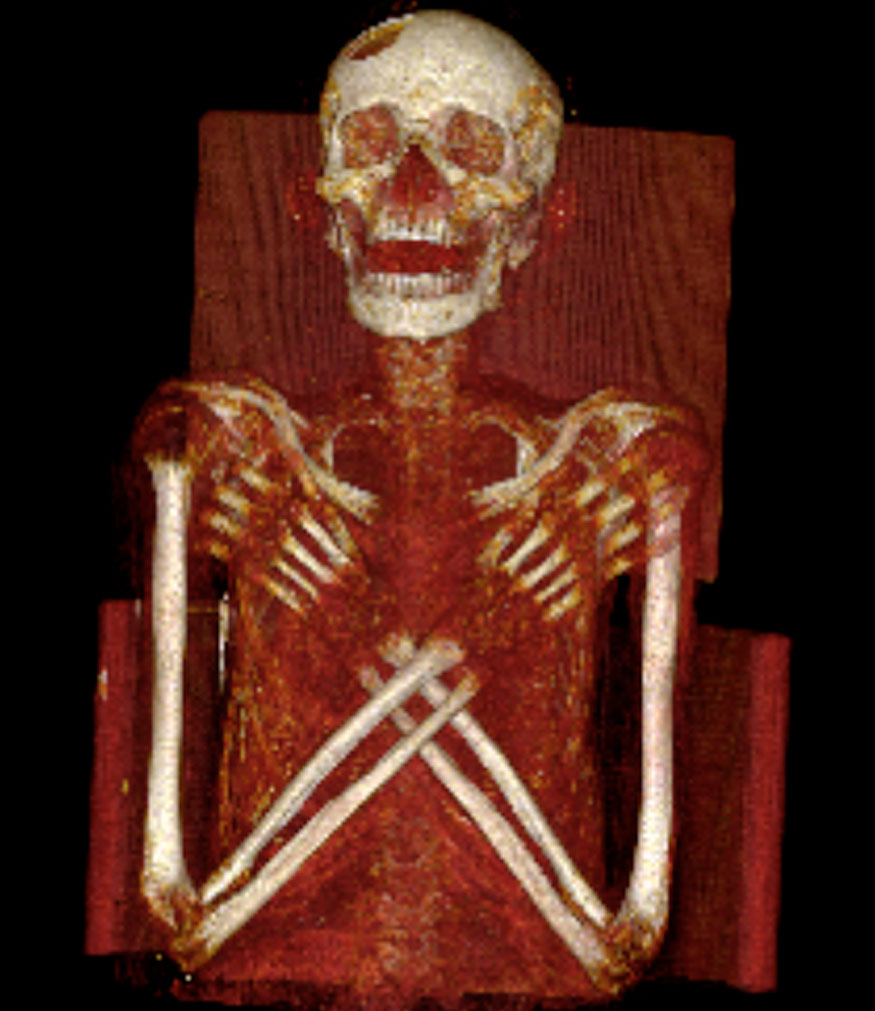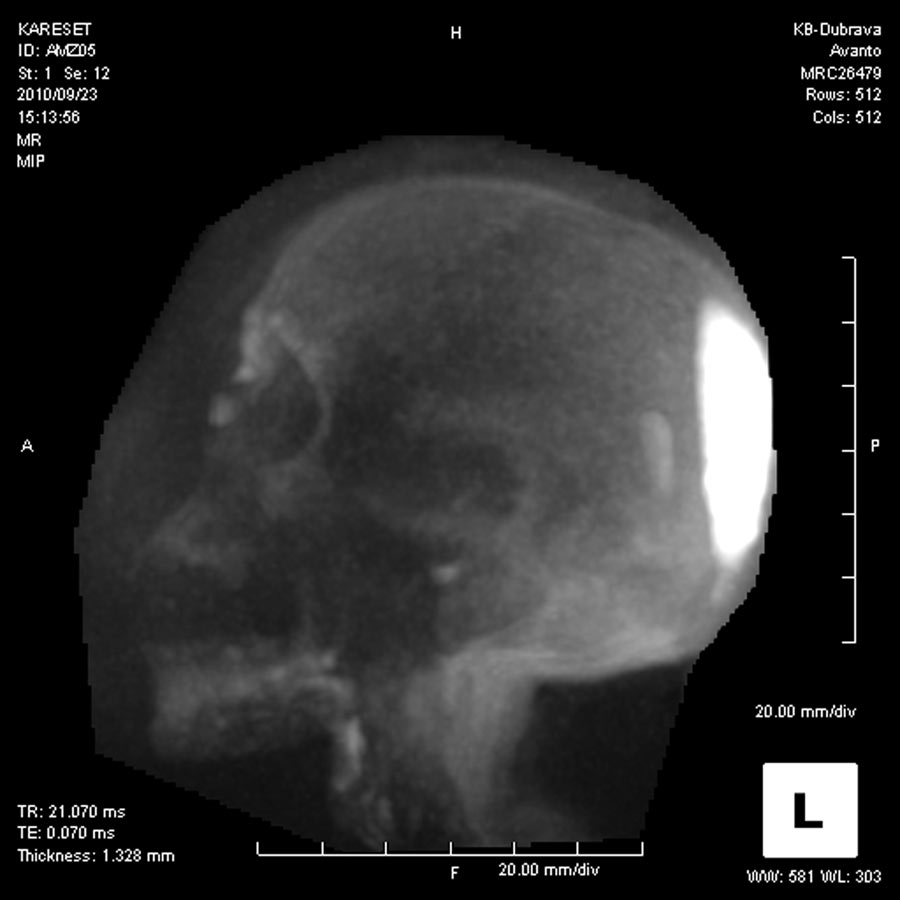Ancient Egyptian Mummy Suffered Rare and Painful Disease
The ancient Egyptian man would've suffered from a rare cancerlike disease.

Around 2,900 years ago, an ancient Egyptian man, likely in his 20s, passed away after suffering from a rare, cancerlike disease that may also have left him with a type of diabetes.
When he died he was mummified, following the procedure of the time. The embalmers removed his brain (through the nose it appears), poured resin-like fluid into his head and pelvis, took out some of his organs and inserted four linen "packets" into his body. At some point the mummy was transferred to the 2,300 year-old sarcophagus of a woman named Kareset, an artifact that is now in the Archaeological Museum in Zagreb, Croatia.
The mummy transfer may have been the work of 19th-century antiquity traders keen on selling Kareset's coffin but wanting to have a mummy inside to raise the price.
Until now, scientists had assumed a female mummy was inside the Egyptian coffin. The new research reveals not only that the body does not belong to Kareset, but the male mummy inside was sick. His body showed telltale signs that he suffered from Hand-Schuller-Christian disease, an enigmatic condition in which Langerhans cells, a type of immune cell found in the skin, multiply rapidly. [See Photos of the Sick Male Mummy]
"They tend to replace normal structure of the bone and all other soft tissues," Dr. Mislav Cavka, a medical doctor at the University of Zagreb who is one of the study's leaders, said in an interview with LiveScience. "We could say it is one sort of cancer."
Scientists still aren't sure what causes the disease, but it is very rare, affecting about one in 560,000 young adults, more often males. "In ancient times it was lethal, always," said Cavka, who added that today it can be treated. [Top 10 Mysterious Diseases]
Cavka and colleagues examined the mummy using X-rays, a CT scan and a newly developed technique for magnetic resonance imaging (MRI) scans.
Sign up for the Live Science daily newsletter now
Get the world’s most fascinating discoveries delivered straight to your inbox.

The disease seems to have taken a terrible toll on the ancient man's body, with images revealing it destroyed parts of his skeleton, leaving lytic lesions throughout his spine and skull. The scans also showed what looks like a giant hole in his skull's frontal-parietal bone, and destruction of a section of one of his eye sockets, known as the "orbital wall."
The mummy-embalming procedure may have worsened some of the disease-caused damage, Cavka said.
Even so, the effects of the disease would have been "very, very painful," and would have affected the man's appearance, particularly in the final stage, Cavka told Live Science.
In addition, it may have led him to suffer from a form of diabetes. The scans show that his sella turcica, part of the skull that holds the pituitary gland, is shallow, which suggests that this gland was also affected by the disease.
"That could have lead to diabetes insipidus," the researchers write in their paper. The condition would have made it difficult for his kidneys to conserve water, something that would have worsened the man's predicament. "Probably he was all the time thirsty, hungry and had to urinate," Cavka said.
Perhaps cold comfort for him now, but his death does offer clues to the ancient world. Scientists have long debated whether or not cancer was common in ancient times.
Some believe that with lower life expectancies and fewer pollutants cancer's prevalence was very low. On the other hand, some scholars believe cancer was more common than thought, but simply very hard to detect in ancient remains.
The researchers point out this mummy is the third known case of Hand-Schuller- Christian's disease from ancient Egypt, suggesting the condition was as common among the ancients as it is today. "Tumors are not diseases of the new age," Cavka said.
The new findings are detailed in the most recent issue of the journal Collegium Antropologicum.

Owen Jarus is a regular contributor to Live Science who writes about archaeology and humans' past. He has also written for The Independent (UK), The Canadian Press (CP) and The Associated Press (AP), among others. Owen has a bachelor of arts degree from the University of Toronto and a journalism degree from Ryerson University.










